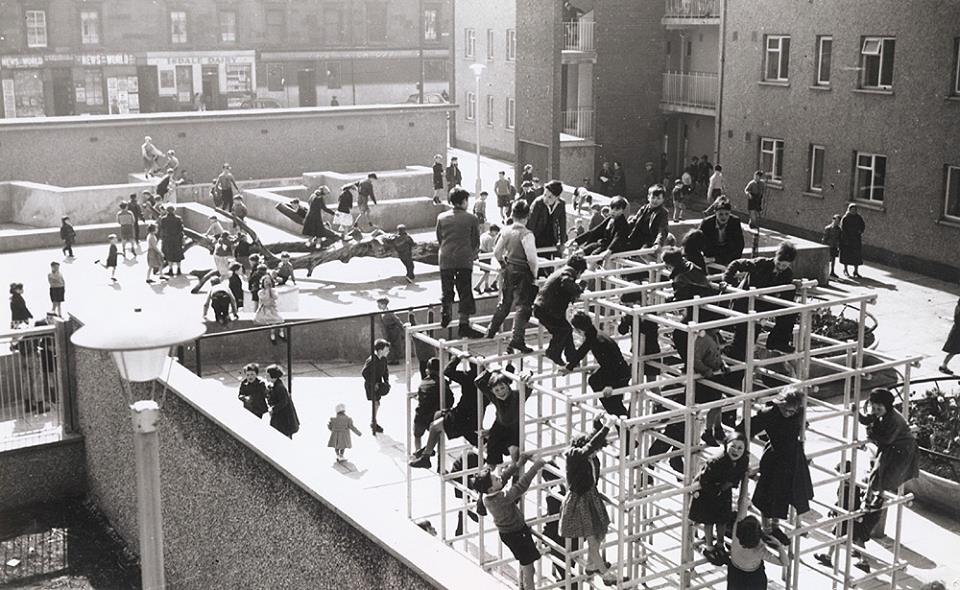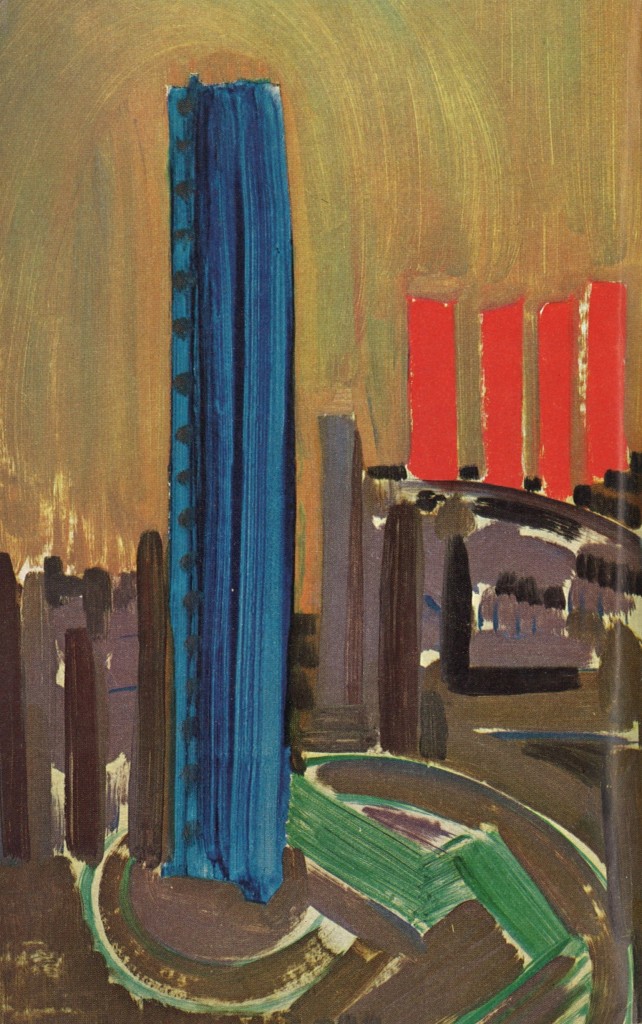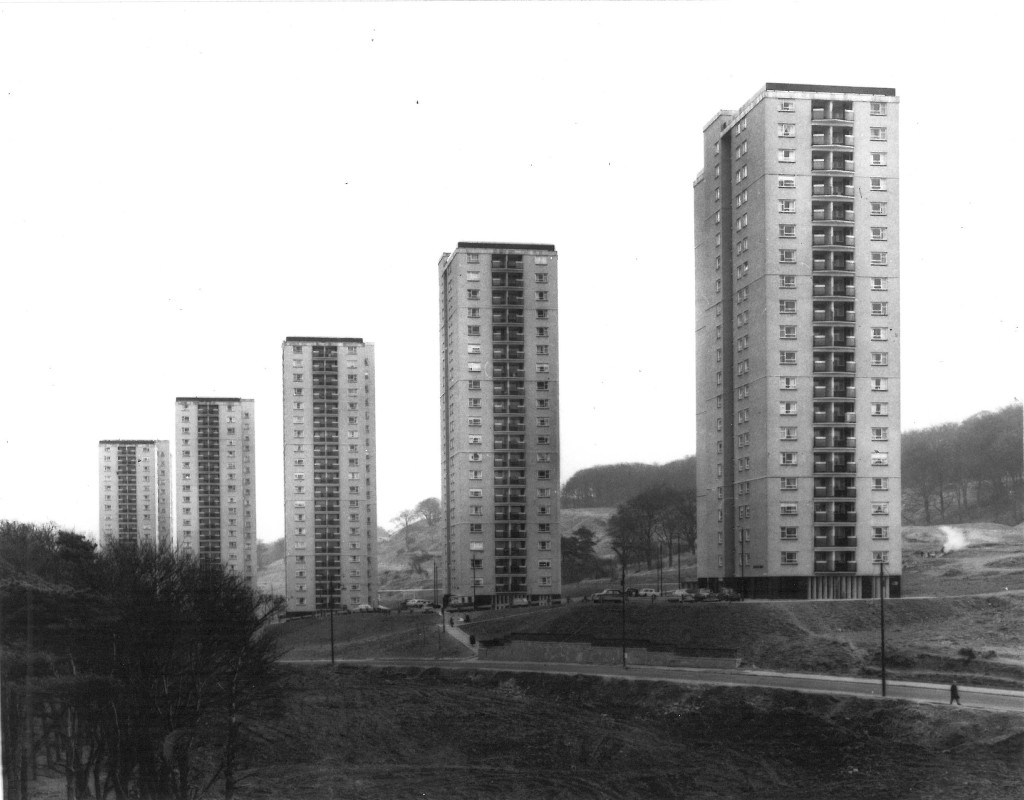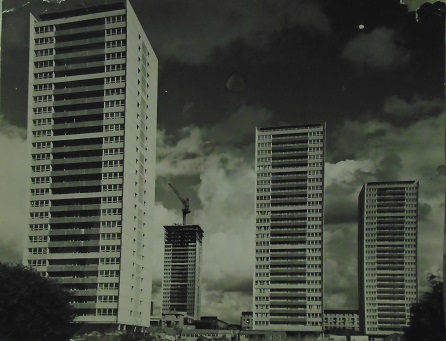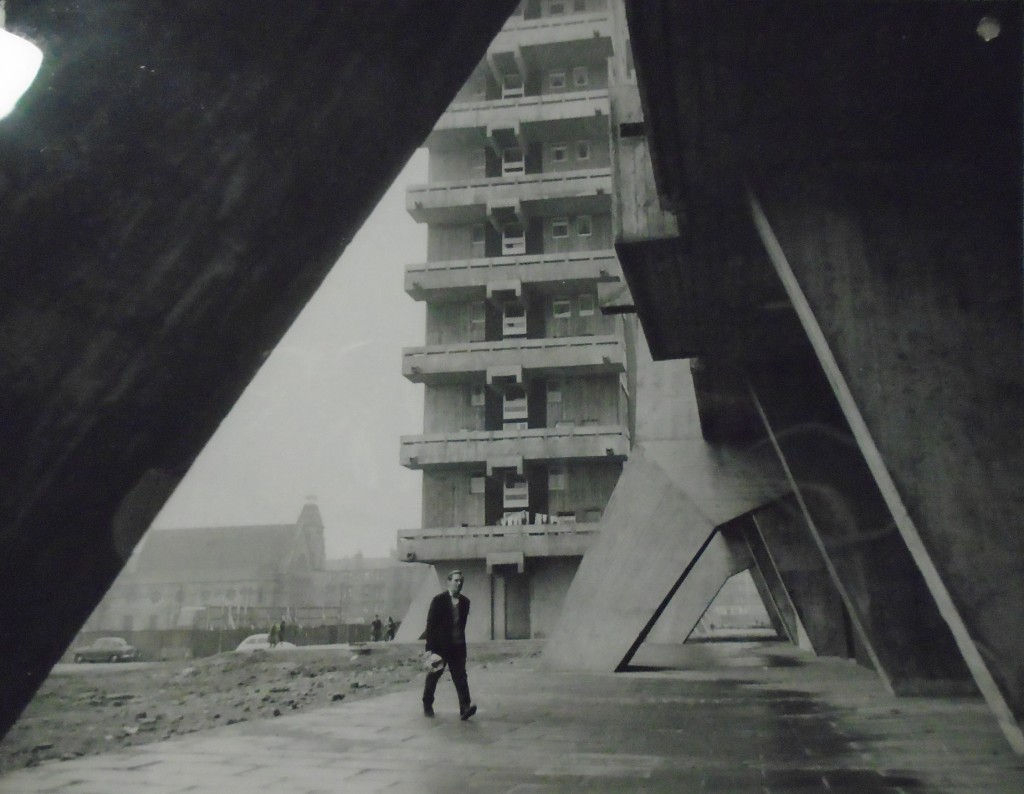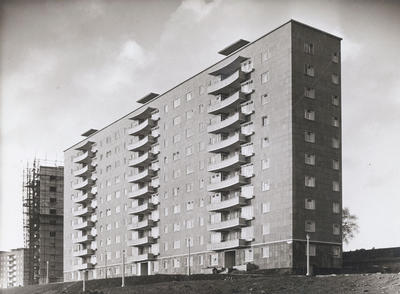Glasgow 1950-1975

In the post war decades, Glasgow was notorious as the most ‘slum-ridden’ city of Britain. To tackle its urban squalor, massive schemes of slum clearance, public housing and urban redesign were undertaken on an unparalleled scale. Hundreds of thousands of the city’s people were rehoused. This project has provided a much-needed long-term assessment of this mass relocation focusing on two case studies: the new town and the high-rise estate, against a background of 50 years of significant economic and social change characterised by the decline of heavy industry and subsequent urban regeneration and cultural renaissance.
Further information
Key findings
Project Outputs
'Multi-storey Memories' - Oral Histories
One of the aims of this project was to find out what life was really like for those who lived in high rise flats in Glasgow in the post war years and especially the 1960s and 1970s.
Many people have written about why the flats were built or their architectural merits but very few have told the story of the people who lived in them.
We wanted to ensure that residents of high rise could tell their own story in their own words.
As well as conducting oral history life narrative interviews with residents and formal residents we also created an online questionnaire, with some of the results being published on this website with the permission of those contributing. We have also created an online resource where you can listen to what people had to say about living in high rise in the four case study areas covered by the project.
To find out more click on the relevant links on the left or click here:
Housing and Wellbeing in Glasgow blog
Case Studies
Homes in High Flats Case Studies
By the late 1960s there were growing concerns about the potential negative effects that living in high rise flats might have on individual and particularly young families. Pearl Jephcott, a sociologist embarked on the largest contemporary study of high rise between 1967 and 1969 in Glasgow. A 5 per cent sample of families living in high flats were interviewed by market researchers and 1,066 questionnaires were completed. At this point there were 163 high rise blocks in Glasgow as illustrated in the map below. Her aim was to hear what residents had to say about life in high rise and her published study Homes In High Flats often featured direct quotations from residents.
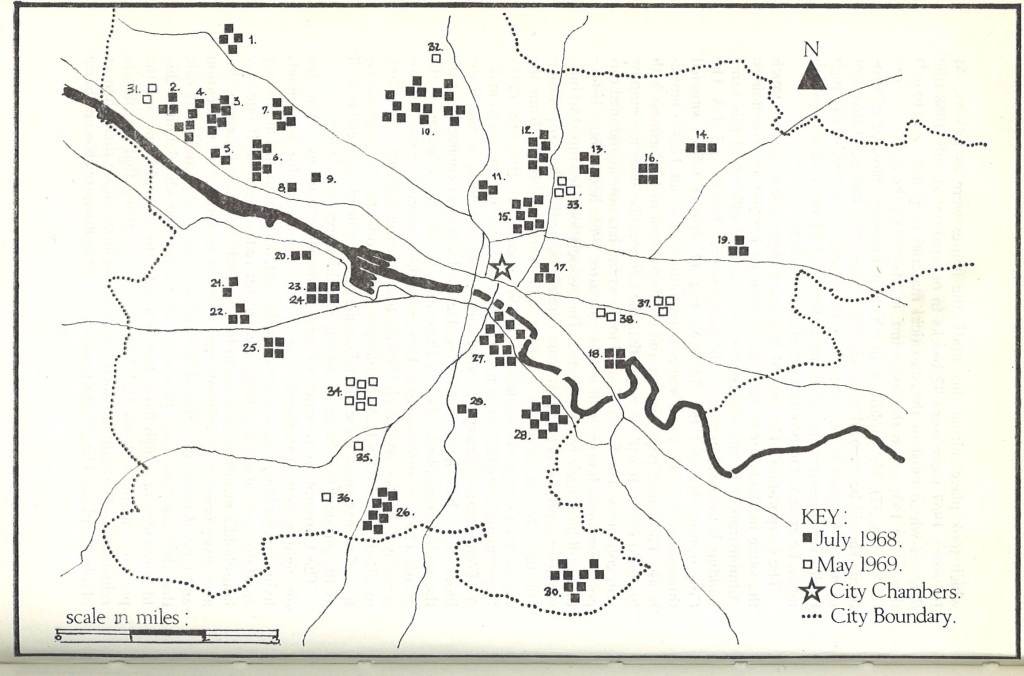
Source: P. Jephcott and H. Robinson, Homes in High Flats, (Oliver & Boyd: Edinburgh), 1971, p. 20.
Alongside the questionnaire Jephcott chose to 'concentrate on a limited number of estates' as this would 'enable staff to make sustained relationships with individual households'. The five areas chosen, Castlemilk, Wyndford, Albion, Red Road and Royston, were thought to be 'not too 'untypical' of the estates as a whole'.
More about Jephcott's Case Studies
Multi-storey Memories Case Studies
We also decided to focus on particular areas as case studies. We selected four areas for our project: Castlemilk, Wyndford, Hutchesontown and Moss Heights.
Click on the images below to find out more:

This work is licensed under a Creative Commons Attribution-NonCommercial-ShareAlike 4.0 International License.
Some material on this website is not being made available under the terms of this licence.
These are:
Third-Party materials that is being used under fair use or with permission (photography owned by archives, blog contributors or from WikiMedia Commons). The respective copyright/Creative Commons licence details for use of third-party material should be consulted.



